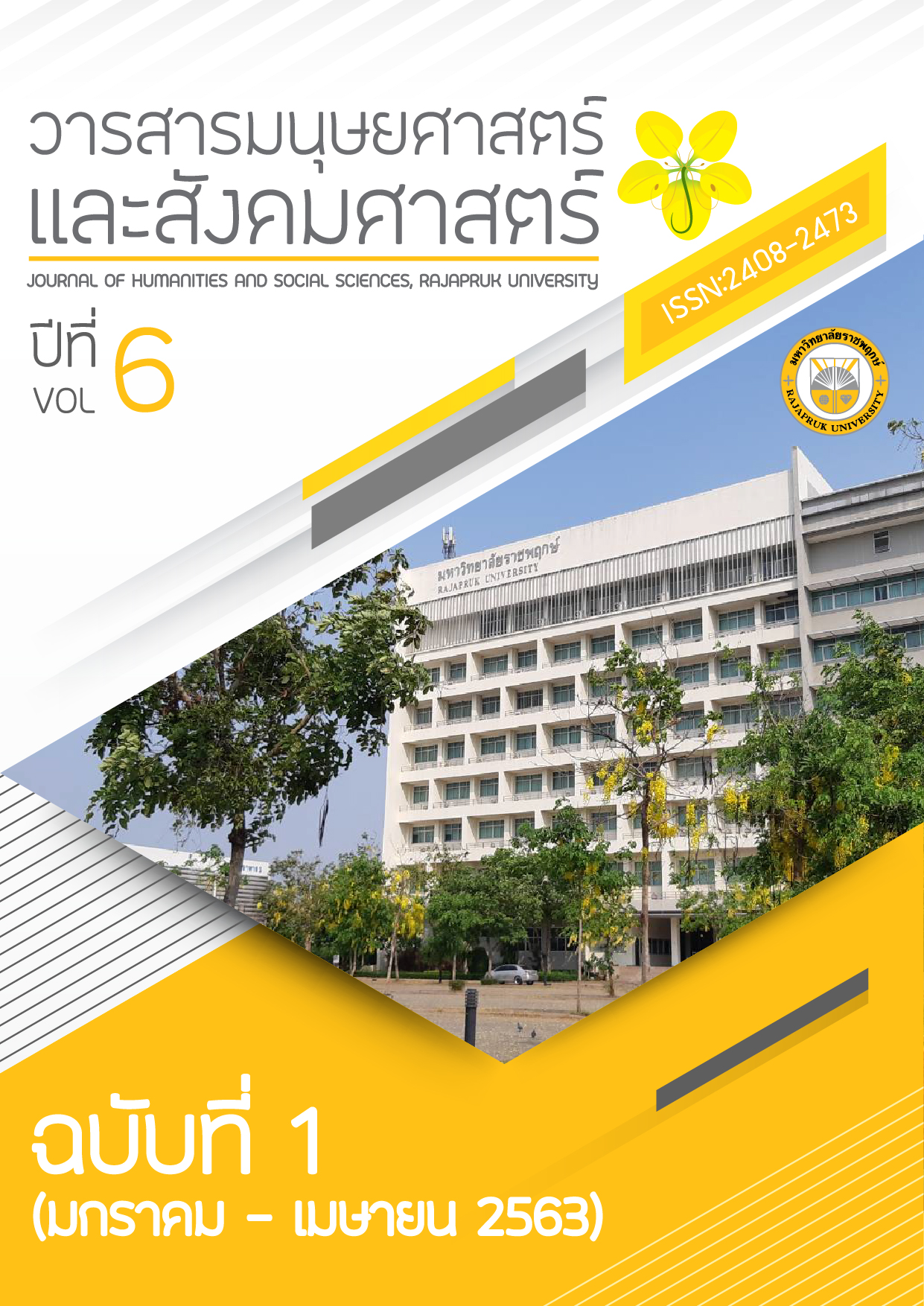The Effects of Technology Innovation, Good Governance, and Organization Atmospheres on Service Performance: An Empirical Investigation of Revenue Department, Ministry of Finance
Main Article Content
Abstract
This study aims to studying the effects of technology innovation, good governance, organization atmospheres on service performance: an empirical investigation of Revenue Department, Ministry of Finance. Based on the concept of the resource-based view of the firms: RBV and Public Service Delivery Theory. From the revenue office and revenue branch office, the sampling targeted 156 sample. The study employed descriptive statistics and multiple regression analysis for hypotheses testing. The results show that technology innovation and organization atmospheres have a positive effect on high service performance of revenue officer of the revenue department. The Revenue Department should use this outcome to support innovative technology and high working encourages organization atmosphere in Revenue Department. That effect may provide better service customers of the revenue office effectively. However, Good Governance does not have a positive effect on the Revenue Performance of the Revenue Department.
Article Details
References
กรมสรรพากร. (2559 ข). ฐานข้อมูลโครงสร้างการบริหารของกรมสรรพากร. ค้นเมื่อวันที่ 19 มีนาคม 2559, จาก http://www.rd.go.th/publish/324.0.html.
กลุ่มพัฒนาระบบบริหาร กรมสรรพากร. (2560). สรรพากรยุคใหม่ไร้ผลประโยชน์ทับซ้อน. ปชส. เลขที่ข่าว 20/2560. กรุงเทพฯ: กรมสรรพากร.
กัลยา วานิชย์บัญชา. (2553). การใช้ SPSS for windows ในการวิเคราะห์ข้อมูล (ฉบับปรับปรุงใหม่). กรุงเทพฯ: จุฬาลงกรณ์มหาวิทยาลัย.
บุญชม ศรีสะอาด. (2554). การวิจัยเบื้องต้น. พิมพ์ครั้งที่ 9 แก้ไขเพิ่มเติม. กรุงเทพฯ: สุวีริยาสาส์น.
สำนักงานคณะกรรมการกำกับหลักทรัพย์และตลาดหลักทรัพย์. (2560). การกำกับดูแลกิจการที่ดีและการพัฒนากิจการเพื่อความยั่งยืน. ค้นเมื่อวันที่ 19 มีนาคม 2560, จาก http://www.cgthailand.org/TH/principles/CG/Pages/cg-concept.aspx.
Aaker, D. A., Kumar, V. and Day, G. S. (2001). Marketing Research. New York: John Wiley and Sons.
Arpaci, I. (2010). E-government and technological innovation in turkey. Transforming Government: People. Process and Policy, 4(1): 37 - 53.
Barney, J. B. (1991). Firm Resources and Sustained Competitive Advantage. Journal of Management, 17(1): 99 - 120.
Behera, A., Nayak, N., and Das, H. (2015). Performance measurement due to IT adoption. Business Process Management Journal, 21(4): 888 - 907.
Brady, M.K. and Cronin, J.J. Jr. (2001). Some new thoughts on conceptualizing perceived service quality: a hierarchical approach. Journal of Marketing, 65(3): 34 - 49.
Churchill, G. A. (1979). A Paradigm for Developing Better Measures of Marketing Constructs. Journal of Marketing Research, 16(1): 360 - 375.
Denhardt, J., & Denhardt, R. B. (2007). The new public service. New York: M. E. Sharpe.
Gottlieb, B.H., Grewal, D. and Brown, S.W. (1994). Consumer satisfaction and perceived quality: complementary or divergent construct?. Journal of Applied Psychology, 79(1): 875 - 85.
Gujarati, Damodar, N; Porter Dawn, C. (2009). Basic Econometrics. USA: McGraw Hill, International Edition.
Hair, J. F, Black, W. C., Babin, B. J. and Anderson, R. E. (2010). Multivariate Data Analysis. USA: Pearson Education International.
Hartline, M.D. and Ferrell, O.C. (1996). The management of customer contact employees: an empirical investigation. Journal of Marketing, 60(4): 52 - 70.
Lawson-Body, A., Keengwe, J., Mukankusi, L., Illia, A., and Miller, G. (2008). E-government service delivery performance: An adaptation of the balanced scorecard to the public sector. Journal of Electronic Commerce in Organizations, 6(2): 11 - 28.
Liao, H. and Chuang, A. (2004). A multi-level investigation of factors influencing employee service performance and customer outcomes. Academy of Management Journal, 46(1): 41 - 58.
Malhotra, N. K. (2004). Marketing Research: An Applied Orientation. 4th ed. New Jersey: Pearson Edition, Inc.
Mao, H., Zhu, B., and Wang, T. (2013). The effect of organizational environment on engineering project cost management. Nankai Business Review International, 4(1): 25 - 48.
Montebello, A. R. (2003). When teams work best: 6,000 team members and leaders tell what it takes to succeed. Personnel Psychology, 56(2): 514 - 535.
Nunnally, J. C., and Bernstein, L. H. (1999). Psychometric Theory. Journal of Psychoe-ducational Assessment, 17(1): 275 - 280.
OECD - Organization for Economic Co-operation and Development. (2005). OECD Guidelines on Corporate Governance of State-owned Enterprises. Paris: OECD Publishing.
Orwa, B. H., Tiagha, E., and Waiguchu, M. (2017). An assessment of the influence of technology and innovation on performance of women small scale entrepreneurs (SSEs) in nairobi, kenya †. South Asian Journal of Management, 24(4): 73 - 87.
Paul, S. (1992). Accountability in public services: exit, voice and control. World Development, 20(7): 47 - 60.
Ratten, V. (2015). Factors influencing consumer purchase intention of cloud computing in the united states and turkey. EuroMed Journal of Business, 10(1): 80 - 97.
Rumelt, D. P. (1984). Towards a Strategic Theory of the Firm. Alternative Theories of the Firm, 2(1): 286-300.
Sava (Angheluta), T., Moisa, C., and Langa, C. (2011). Study on promoting social responsibility by SMEs in order to ensure sustainable performance. Economy Transdisciplinarity Cognition, 14(1): 73 - 80.
Smith, H. L., Shortell, S. M., and Saxberg, B. O. (1979). An empirical test of the configurationally theory of organizations. Human Relations, 32(8): 667.
Torugsa, N., and Arundel, A. (2016). The nature and incidence of workgroup innovation in the Australian public sector: Evidence from the Australian 2011 state of the service survey. Australian Journal of Public Administration, 75(2): 202 - 221.
Wernerfelt, B. (1984). The Resource-Based View of the Firm. Strategic Management Journal, 5(2): 171 – 180.


